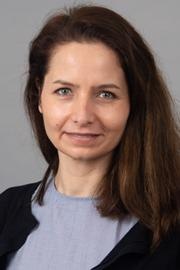In this interview, AZoM talks to Anna Walkiewicz, Applications Specialist at Quorum Technologies, about sample coating and how it can help improve SEM imaging.
Could you provide a brief introduction to the work that Quorum Technologies does?
Quorum Technologies is a UK company based on the South Coast of England. Our key products are sample preparation systems and cryo solutions for electron microscopy. We specialize in supporting streamlined sample preparation workflows for the successful electron imaging of different types of materials.
What are the fundamental principles of electron microscopy?
The advances in materials research and technology require microscopes that can image submicron or even smaller structures. Optical microscopy will not serve in such cases due to its resolution limits.
Instead, we need to use something more sophisticated like scanning electron microscopy or transmission electron microscopy, where the resolution could reach the sub-nanometer.
To generate an image, electron microscopy uses electrons. Their wavelength is much smaller than visible light, meaning it is possible to resolve very fine structures and see much more detail.
Using electrons means we also have access to different signals like secondary electrons or backscatter, and we can analyze X-Rays coming out of samples to find out about the sample’s composition.
What do we have to consider in sample preparation for electron microscopy imaging?
The main factor that impacts the feasibility and quality of electron microscopy imaging is the samples’ nature – particularly its conductivity.
Solid, conductive samples do not require complex preparation for imaging in SEM. Non- or poorly conductive solid samples must be coated before imaging to prevent them from accumulating charge resulting in the appearance of artifacts.
The process of preparation is more complex for non-solid samples. Dryable samples can be prepared by applying biological sample preparation techniques such as CPD or freeze-drying before coating.
Non-dryable samples with varying moisture content can be imaged in low vacuum or via a high vacuum cryo technique. We can also apply metal coatings to samples before imaging, thus ensuring we get a better signal from them.
What is the best approach to select an appropriate sample coating?
To select the most appropriate coating option for a sample during preparation, we need to look at the signals generated during imaging. This involves taking into account the primary beam and its interaction with the sample.
The response from the sample is typically comprised of multiple signals, including secondary electrons, backscatter electrons, X-Rays and scatter luminescence.
When working with SEM, what are some common uses of secondary electrons and X-Rays, and does depth of penetration impact their usefulness?
A typical SEM can analyze secondary electrons and backscatter. If we also have an EDS detector in place, we can also analyze X-Rays.
There are four types of secondary electrons that we may receive as a response from a sample. The first and the second type of electrons are related to the sample’s topography.
The first type of electrons received comes from the top surface of the sample. These electrons leave the sample at a very high angle, often requiring particular in-lens detectors to gather and analyze this signal.
An average tabletop SEM only detects the electrons of the second type. These electrons are typically related to high beam voltage imaging and provide information on the sample’s topography and composition.
The penetration volume is related to the beam voltage used, with higher beam voltage resulting in deeper penetration into the sample.
Application of lower voltage allows us to obtain information from the top-most surface of the sample, but this is not always possible.
If we do not have full analytical SEM capabilities, we may need to treat our sample to localize the response to the top-most surface. We do this using metal coatings – typically iron.
About Dr. Walkiewicz
Dr. Anna E. Walkiewicz is the Applications Specialist at Quorum Technologies. She holds a PhD from the University of Birmingham, where she researched the recognition of chirality at the nanoscale. During her previous role as Applications Scientist for SEM and AFM products at Keysight Technologies, she acknowledged the extreme importance of proper sample preparation for high-resolution imaging. Her main area of interest lies in discovering the outcome of processes occurring at the uppermost part of surfaces.


This information has been sourced, reviewed and adapted from materials provided by Quorum Technologies Ltd.
For more information on this source, please visit Quorum Technologies Ltd.
Disclaimer: The views expressed here are those of the interviewee and do not necessarily represent the views of AZoM.com Limited (T/A) AZoNetwork, the owner and operator of this website. This disclaimer forms part of the Terms and Conditions of use of this website.